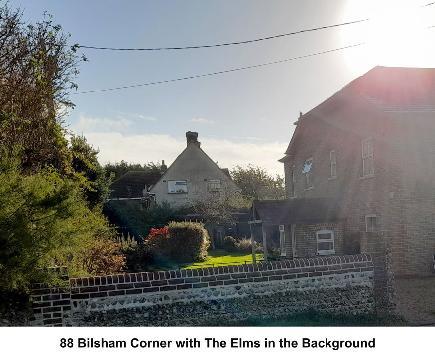
2 minute read
HistoriccrashinBilsham
By Allen Misselbrook, Yapton & Ford local history
Very few, if any, communities in the South of England were untouched by the air-war during WW2. Yapton, having the RAF base of Ford airfield on its doorstep, was, perhaps, at greater risk than many villages. Several bombs were dropped and exploded in the village, possibly intended for the airfield, and several aircraft ended up crashing within the Parish boundary.
Advertisement
As we approach the 79th anniversary of the most harrowing incident I would like to dedicate this article to the memory of those who died. This occurred at Bilsham Corner at approximately 11.35 am on Sunday 30th January 1944 when a fully laden Mosquito crashed seriously damaging two buildings, No. 88/89 Bilsham Corner and “The Elms” in Grevetts Lane West. The Mosquito, Type FB. V1., was one of six Mosquito aircraft of 487 (New Zealand) Squadron which had taken- off from RAF Hunsdon in Hertfordshire, on a mission to bomb V-1 sites in Northern France. They encountered fog on the south coast and it appears that the mission was aborted and the Mosquito (Serial No. HX916) flown by Fl/Sgt John Hyndman RNZAF, flew into the ground at Bilsham while trying to land at Ford Airfield. As the stricken aircraft disintegrated the engines, bombs and debris were thrown against the two houses causing one to catch fire. One bomb smashed through the wall of No 88 ending up in a fireplace, fortunately without exploding. Bognor Regis N.F.S. (National Fire Service) attended to scene, assisted by the Aldingbourne Rescue Service. Both Pilot Fl/Sgt John Hyndman aged 23, of Auckland, New Zealand and his Navigator, W/O
88 Bilsham Corner with The Elms in the background George Matthews RCAF, aged 21 of British Columbia, Canada were killed. They are both buried in Brookwood Military Cemetery. Two civilians were also killed in the tragedy, 82year-old Mr George Rogers of ‘The Elms’ who appears to have been working in his garden shed at the time which was destroyed by flying debris, and nine-year-old Mary Ifould, daughter of Mr & Mrs Percy Ifould, who was playing in her garden at No. 88. Her little body was carried by the rescue services and laid under a tree in the next-door garden, No. 87. According to Joan Ifould, future wife of Mary’s brother Jim, this tree remained for many years as a memorial to her by her family and neighbours. She is still remembered today by a few surviving friends from Yapton school where she was a pupil. Both George Rogers and Mary Ifould lay at rest in St. Marys Church Yard in Yapton.
Yapton church c.1965
The Mosquito was the most versatile aircraft built during WW2, built mainly of wood and originally designed to be used for reconnaissance purposes. This fast, two engined machine, saw service not only as resonance but as a fighter, bomber, night-fighter, mine-layer and pathfinder. It could operate as effectively at altitude as well as at low level. 7,781 were built in its various marks, but at the time of writing there is only one airworthy machine flying although that could change very soon. To contact Allen Misselbrook on a local history matter please email: allen@yaptonhistory.org.uk










